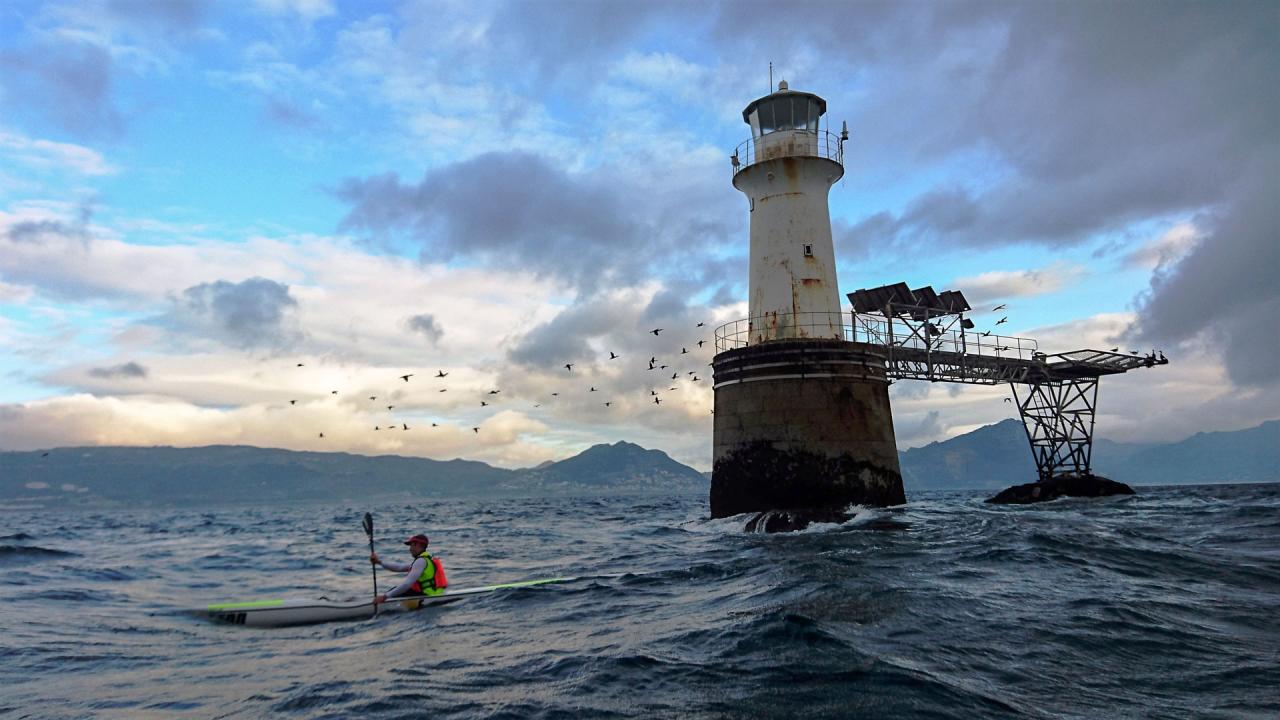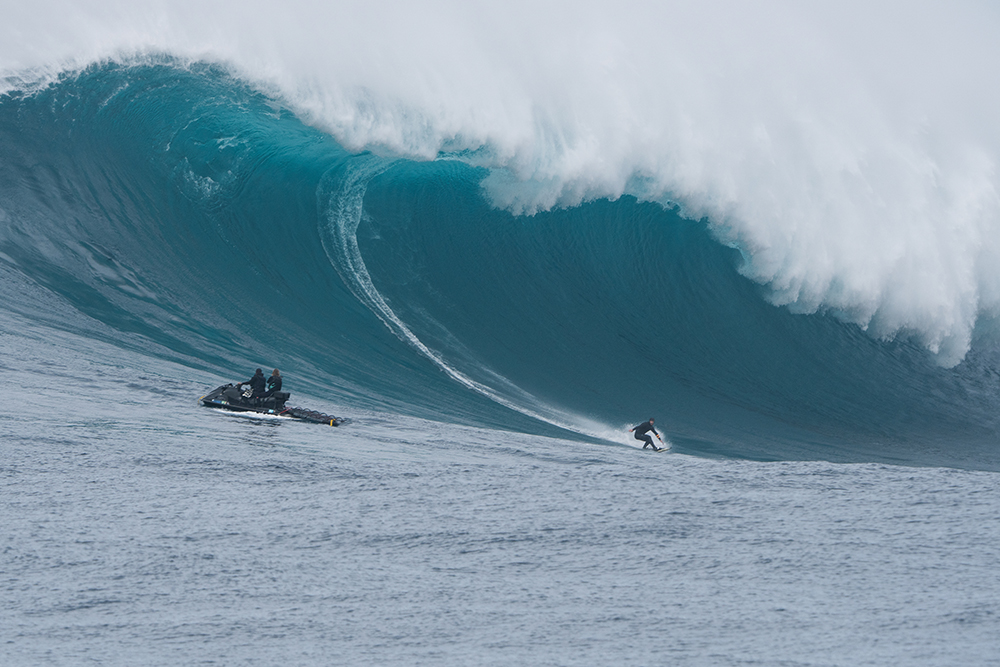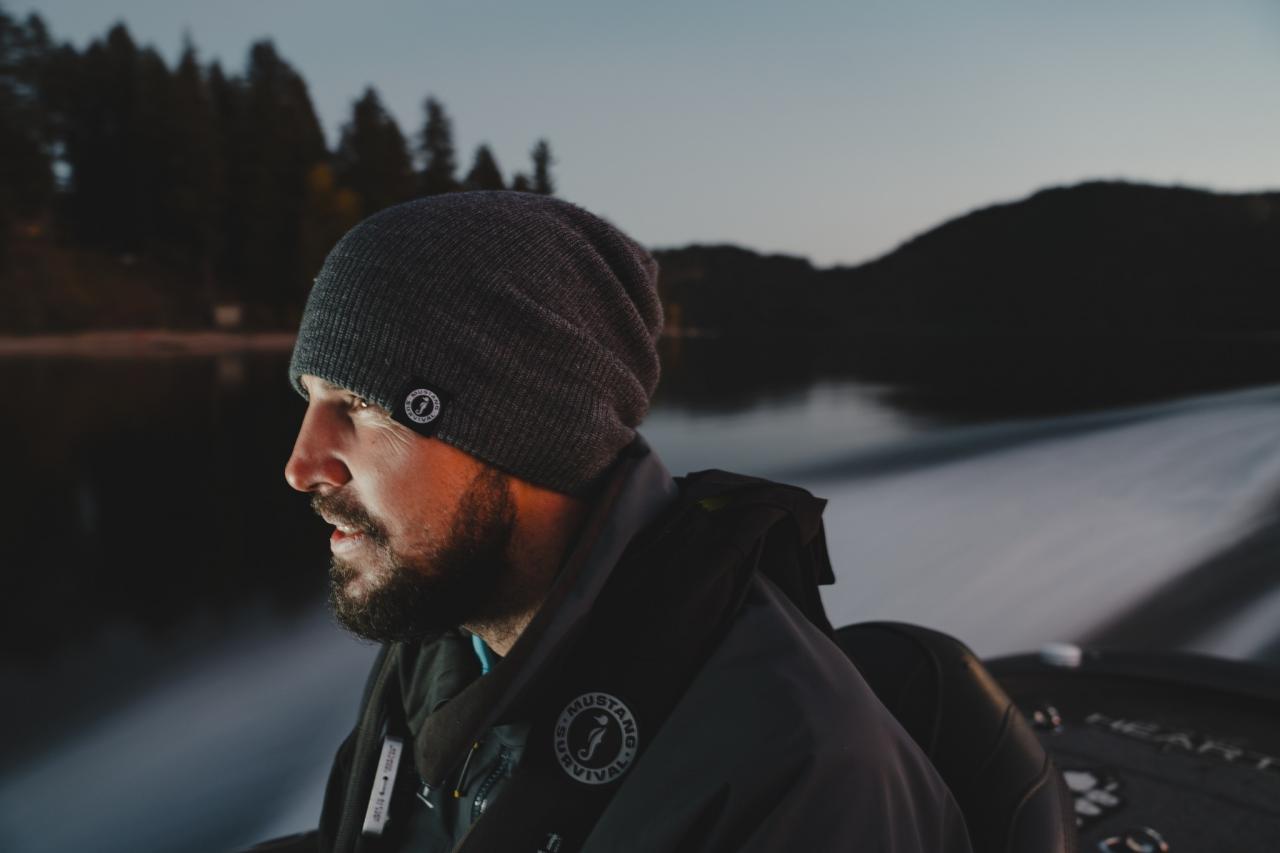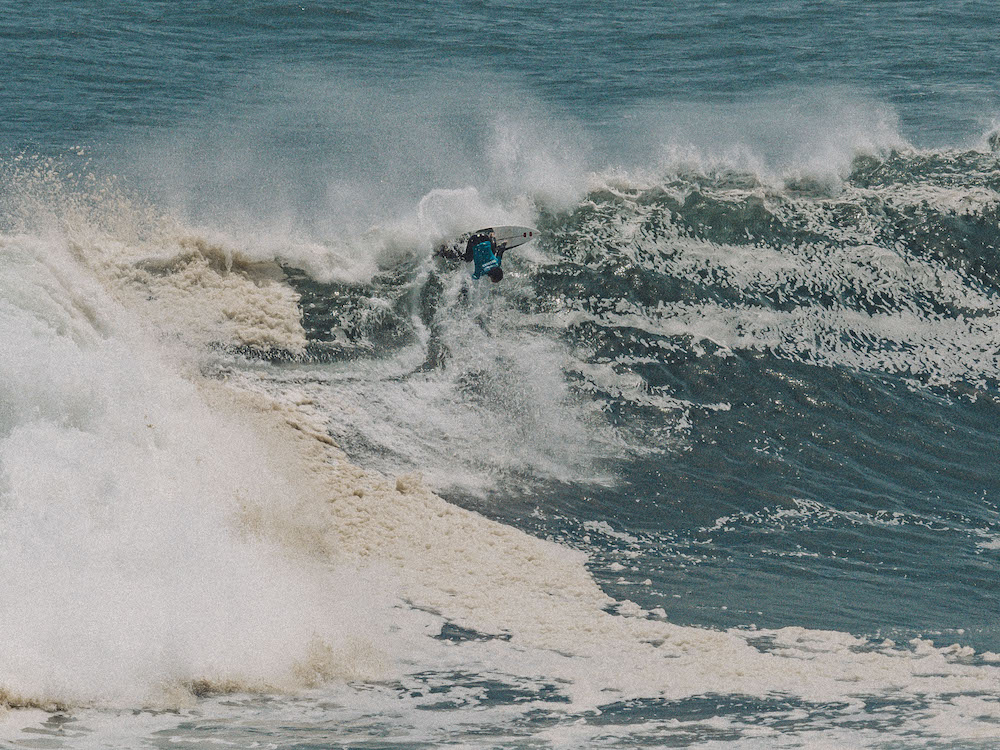“We are going to paddle in that!?” Standing next to our rental car, getting blasted by wind gusts, we can see sand from the inland dunes turning the coastal road into a beach. False Bay is white with spray and cresting waves. It is blowing thirty-five to forty knots steady with gusts above forty knots. I’ve spent a lifetime in and on the water and I have never intentionally gone out in these conditions. Standing at the scenic overlook, leaning against the breeze so as not to get blown away, I could not stop wondering exactly how this would work. But that is what we and a bunch of Cape Town locals are about to do - the famed Miller’s Run on an epic day. I could feel that pre-big-thing adrenaline start to swirl and was happy I had breakfast before witnessing what writers who’ve come before would have described as a maelstrom.
The Millers Run is a 7.27 mile (11.7km) route between Millers Point, halfway up the cape capped off by the Cape of Good Hope and the beach in the town of Fish Hoek, southeast of Cape Town in False Bay, South Africa. The South Atlantic is to the west and the Indian Ocean to the east. Summer winds come in strong from the southeast and along with them, and most importantly, in line with them, a gorgeous swell - originating from the Southern Ocean. The fetch is big (the nearest land to the south is Antarctica). Everything here is big. How could it not be? We are at the intersection of three oceans.
The point of Millers Run, the reason it has a name and the reason we are standing on a lookout getting sandblasted by forty knots of southeasterly breeze in order to check it out, is that it is arguably the world’s most exhilarating and famous downwinder.
The way to maximize the Millers Run experience is via a surfski. Like a lot of people, particularly Americans and particularly in New England, I am new to surfskis. They are huge - HUGE- in Australia, New Zealand and South Africa. They are gaining momentum in Europe and have incredibly active enclaves in select places in the United States with 700 people signing up for a yearly race in the Columbia River Gorge and hundreds of racers per weekend on the west coast. And, of course, they show up in numbers for the Molokai race in Hawaii.
To get the real scoop on surfskis and some of the surfski origin story, I had a chat with Dawid Mocke, owner of the SurfSki School in Fish Hoek and the base for our adventures. He, along with his family, also heads up other surfski-related pursuits including his own designed and branded gear line and collection of international surfski schools, using his own teaching methods. Dawid is all muscle. All stoke. And all joy for the sport of surfski paddling.
Surfskis started in Australia as part of the surf lifesaving group of watersports - swimming, prone paddling, beach sprinting and surfski. (Surf lifesaving now also includes long boat racing, inflatable boat racing, beach relays and more). The surfskis were optimized to get out and back in the waves faster than swimmers and prone paddlers. In Dawid’s words, they are, “skinny kayaks that ride big waves fast.” They are also extraordinarily versatile and can be paddled anywhere there is more than a shin’s depth of water and even then you can put a kick-up rudder on the back and go for ankle-deep. Wind and waves make the craft sing, but surfskis are also a glorious way to get a workout, explore a coastline, enjoy the water from on the water or any combination thereof, whatever the conditions.
Dawid adds that surfskis are the, “perfect combination of adrenaline and endorphins.” I think a lot of us are looking for exactly that: neither the endorphins-only situation of being in a gym or going for a run, nor the adrenaline-only options of BASE jumping, but sports that blend both, that can raise our heart rates because of both exertion and adventure.
So, back to the Millers Run. Picture this big, lovely, long-period Southern Ocean swell. Then add twenty to forty knots of breeze. Line them up. Get a guy called Vinnie to buy a van and a big trailer and charge very little to drive you and your boats (and your friends) a few miles upwind. Color the sea a deep turquoise. Drop in some striking mountains to parallel the route. Add in a dash of African penguins, a handful of marine mammals and a flock or two of seabirds (the kind you want to photograph rather than the kind that poop on you). And - if you have the skills - include a paddle, PFD, cell phone with a local water rescue app downloaded and a surfski. You now have everything you need for an experience that exists at the pinnacle of this sport. Every day. Sometimes multiple times a day!
But what if you are keen beginners/intermediates from Vermont who’ve put in a fair amount of time paddling on freshwater lakes, are extremely experienced on the water (though usually under sail) and are hugely excited to have a chance at this famed downwinder, but lack the big condition surfski skills? Enter Dawid Mocke (again) and his slate of pros, world champions, racers, coaches and generally awesome instructors as well as a few double surfskis. That is how my husband James and I got to do this without being a liability to ourselves or anyone else - paddling from the back of a double. James paddled with Mark Keeling, surfski World Champion and Dawid couldn’t have picked better for James. I had local legend, Dale Robinson, in the front of my boat - also a great match.
After digging the sand out of our eyes and making our way down from the lookout, we got into paddling gear and tied our GoPros to our PFDs. We piled into the Millers Bus with a bunch of people who had that relaxed but excited pre-sporting vibe (not the ‘holy shit it’s blowing 40 and we are going out on boats, some of which weigh less than 30 pounds and all of which are narrower than a seat in economy class’) vibe, which is what I was feeling. The drive upwind is only around twenty minutes depending on whether there are troops of marauding baboons to interrupt progress.
Arrival is somewhat frenzied as a dozen excited paddlers unload boats to get rolling. Part of what makes this downwinder work is that Millers Point, the titular public park from where we launch, offers a perfectly flat and protected start line. This is all the flat and protected you get. I think I took around ten paddle strokes before the protection was gone and we started to feel the breeze and waves coming at us from the side. You need to get a bit of easting done at the beginning of the run in order to be properly lined up to surf for the rest of the way. All I could do was not let the paddle get ripped out of my hands by the heavier gusts and concentrate on working with, not against, Dale as he braced the boat against the waves coming at us from the side. Letting my paddle fly away like Auntie Em’s house in The Wizard of Oz or causing a capsize at the top of the run was not what I was after. Fortunately, Dale is super chill and extremely competent, which is good because three minutes in, I was neither of those things. Instead, I was super excited, nervous and oh so very new to conditions like this.
When we turned downwind and put forty knots of wind and three to five foot swells behind us - it was ON! Find your equivalent - pushing off a lip, jumping off a cliff - it felt like someone just pressed the ‘send’ button. Dale, who had been paddling to get the job done while we got positioned, now blended his power with finesse as he steered us into bigger and bigger waves. I was just trying to keep up with his cadence and balance my adrenaline and endorphins, both of which were spiking way too early. We were surfing, not just sliding or getting some pushes, really surfing down the waves! It. Was. Amazing. I did a lot of whooping. It felt like we were going downhill. It felt like we were on a bump run. As a mogul skier (Chute under the single chair at Mad River Glen is my favorite bump trail), I do not make this comparison lightly. This went on for miles. Miles!
The big landmark and the approximate halfway point of the Millers Run is Roman’s Rock lighthouse. It is good there is a lighthouse there because I have to imagine that the actual Roman’s Rock took out many unsuspecting ships. It is in the middle of the bay and interrupts a lot of energy coming its way in the southeast. It’s like a movie set. It is so dramatic. Imposing. Concrete and metal. Rusty and battered. You don’t have to be very close to it to see the waves crashing on the cliffs. In fact, the Rock’s presence helps put the size of the waves and the strength of the wind into perspective. Reaching it, for me, felt like achieving a milestone.
I felt like I was getting more in sync with Dale. I had already surfed the fifty best waves of my surfski life. We passed one of the locals and I was calm and controlled enough to turn my head and capture some footage of him surfing past the lighthouse. I no longer felt like my paddle would fly away (it was still blowing forty and I was just getting “used to it”), but I was mostly feeling elation and that in-the-moment-ness of weaving athleticism and adventure that only being outdoors in the elements can provide.
The next section from the rock to the beach begins in the huge conditions at Roman’s Rock and gives you a heap more chances to enjoy the big breeze and the bumps (that is what the paddlers call the waves that you can surf. It is a perfect term) before you start to come into the quasi-protection of Fish Hoek Bay which unveils the last challenge and opportunity of the run - getting through the surf break and back onto the beach.
To be honest, prior to this trip, I had never been on a surfski in a shore break. Luckily while we were in Cape Town, on the days that were not good for a Millers Run with not enough wind or wind from the wrong direction, we took some lessons on getting in and out of the surf. I say luckily because I thought you were supposed to ride the waves like one would with a boogie board. I don’t know why I thought that. I spent my summers in the waves of the Jersey Shore on a boogie board. So maybe that explains it? Either way, that was not the correct approach which I proved in the first (and second) lessons when I chose the biggest waves and rather than paddling ahead of them, I let them push me in, which meant getting what can only be described as washed up on the beach. The second attempt involved spearing the bow of the boat into the sand, ejecting myself into the whitewater while launching the boat into the air. This was not my proudest moment and one that, embarrassingly, James got on his GoPro.
What one should do to get through the shore break is much more nuanced and strategic than let the biggest wave wash you in. With Dale in charge, I was feeling safe and in control, but still with a high heart rate (adrenaline! endorphins!) when we came into the beach at what felt like warp speed. I could see the curl of a wave over my shoulder and when Dale said, “Paddle hard!” I did. We stayed just ahead of the whitewater gliding into shin-deep water.
The run was done. I looked up to see a beaming James walking down the beach to meet us. What is better than having one of the best sporting experiences of your life? Realizing that your partner did as well on the same day, in those same conditions! James and Mark added up to a whole lot of power and I didn’t see a lot of them during the run (though James said they could hear my whooping from afar).
I wasn’t always able to paddle at the same cadence as Dale, but I didn’t feel just like a passenger either. He was all wave-riding finesse, connecting wave after wave with minimal paddling in between. It was stunning to witness. I watched as he steered us from swell to swell. You steer surfskis with a rudder controlled by your feet, and also with your body. He also used his paddle to slow us down at the top of waves so we’d stay on them longer instead of just spearing the trough ahead. When I asked him how he feels about downwinding and the Miller’s Run in particular, he described it as “finding rhythm and flow with it being intuitive and artistic.” He can’t get enough of it. Literally.
Dale holds the record for the most Millers Runs in a year at 222! It is incredible for a guy with a day job. But Dale truly does love it and what’s even more extraordinary is that he is willing to share his enthusiasm and the precious experience of a Millers Run with people like me and beginners who cannot yet do the run in a single. Something that I appreciate about Dale is that one of the reasons he loves taking people out - even if they paddle at the wrong time (sometimes me), hoot and holler for the entire run (me), lean the wrong way (I tried not to do that), freeze out of fear (not me), and/or cry out of fear (not me either, but not judging, the conditions are extremely intimidating) - has to do with the incredible transformation that can happen over a relatively short amount of time on the Millers. I am very comfortable on the water and in the water. I have a lot of respect for what the water and an ocean, in particular, can do, so I was more excited than afraid. That said, Dale has had people spend the first half of the run in tears of terror, only to land at the beach with tears of joy and pride. His approach, his sheer joy, his comfort, his skills - it all allows for the person behind to move along a classic extreme sport continuum of fear-induced adrenaline, to exhilaration-induced adrenaline, to I-just-did-that pride-induced adrenaline. I’m sure you’d agree they are different.
Dale himself nearly drowned as a child. And then he taught himself to overcome the fear he had developed of the ocean. He knows first-hand what overcoming fear feels like. And the fact that he both wants to and can help people experience that same major and personal accomplishment while having one of the best times ever on the ocean puts him high in my book. My grandmother would call him a mensch - a Yiddish word that sounds like it might not be a nice thing to call someone, but actually means a person of integrity and honor.
Big thanks to Dawid and his wife Nikki, Ardmore and the team at the surf club: Mark, Dale plus our other excellent instructors, Reef and Terrance, who taught us how to paddle into a surf break with joy but not drama. It was a sporting experience for the record books for us. Honestly, it is hard not to compare every day to those days going downhill with Dale, wind and waves from the Southern Ocean lined up behind us while we surfed at 20+ mph. And that is OK. I still whoop when I catch a good motorboat wake or a good bit of steep chop on Lake Champlain.
The Millers Run is arguably the best downwinder in the world, but it is certainly not the only one. Great joy can be found worldwide - perhaps, hopefully, even near you.















